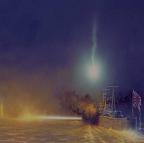Alcibiades73
Posts: 346
Joined: 5/4/2021
Status: offline

|
quote:
ORIGINAL: eightroomofelixir
Another thing worth noting about the China-Japan balancing is the terrain. For instance, in the game, you can see the hexes around Changsha are relatively flat, thus making a Japanese push from Nanchang into Changsha or from Changsha into Kweichow (Guiyang) quite easy.
In reality, the province where Changsha resides, Hunan, is a very mountainous province with less than 1/4 of it being plains and river valleys. In between Changsha and Nanchang, there exists the Luoxiao Mountains,with at least 4 peaks over 2000m. The Hengshan Mountains, situated right between Changsha and Hengyang, has a peak of over 1000m. In between Changsha and Kweichow, the terrain is so mountainous that in the 1930s the place wasn't even Sinicized, dominated by the Miao people; and the road network in the region was nearly non-exist. Basically, you cannot push any modern military units larger than a division through these mountains without suffering severe logistic issues; rural southern China in the 1930-40s had a logistical situation similar to that of northern Burma, that is, a nightmare.
The same thing can be said to northern China as well. In reality, there is a massive mountain range that flanks the southern bank of the Yellow River in between Chengchow (Zhengzhou) and Si'an (Xi'an), which reduce all the possible traffic into a small strip of land. Even today all the highways and railways between Xi'an and Zhengzhou need to go through one single mountain pass, and whoever holds the pass could deny everyone coming from east. While in the game, you can see two hexes west of Chengchow just being hills.
As Platoonist said, what saved the Nationalist China IRL was a nearly undeclared truce (there was a major battle around the Three Gorges region in 1943 as the Japanese tried to directly push towards Chongqing, so not really a truce period all the way), and the terrain-logistic difficulties in China heavily contributed to this truce period as well. Even in Operation Ichi-Go, pushing west into the mountain regions was not a primary Japanese strategic objective. On the other hand, all these terrain difficulties were not properly addressed in the game, an experienced and determined Axis player can overcome the in-game logistic obstacles and push into Lanchow with ease.
This is all well-said, except that I find pushing into China - especially from the south and the north - already sufficiently taxing in the game due to geography. Forcing major objectives to be accessible only via a single funnel would make the game insufferable and would create even more balance issues than what may exist at the moment.
By the way, since we are on the matter of insufficient representation of topography in this game: I have to ask as a Korean national why the Yalu and Tumen Rivers are not even represented in this game? The border between Korea and China is almost continuously bisected by these two rivers; and the presence of these two rivers as barriers was at least part of the reason why the Korean people were able to maintain their independence for so long. I know it has zero impact on the game itself, but it is basically akin to have the U.S. on the map without the Great Lakes.
< Message edited by Alcibiades73 -- 6/6/2021 10:45:36 PM >
|
 Printable Version
Printable Version















 New Messages
New Messages No New Messages
No New Messages Hot Topic w/ New Messages
Hot Topic w/ New Messages Hot Topic w/o New Messages
Hot Topic w/o New Messages Locked w/ New Messages
Locked w/ New Messages Locked w/o New Messages
Locked w/o New Messages Post New Thread
Post New Thread